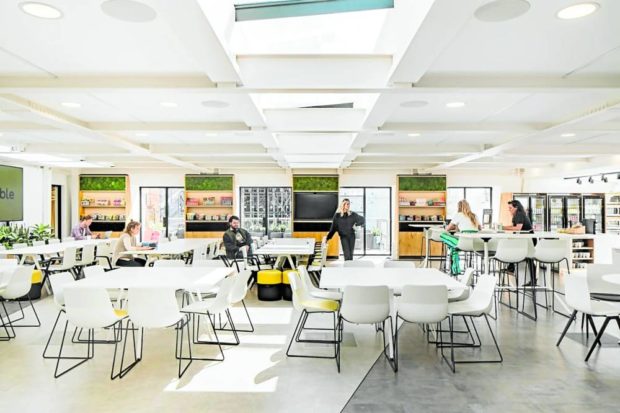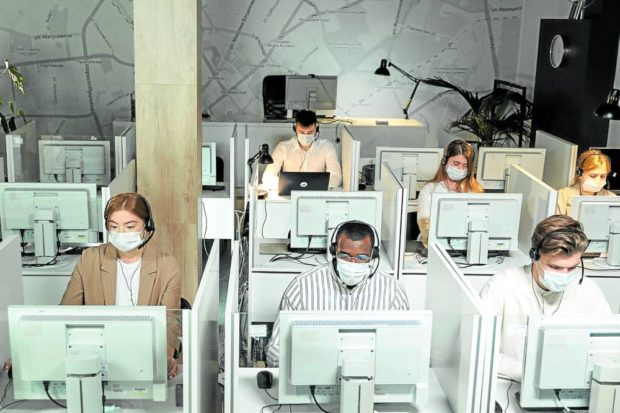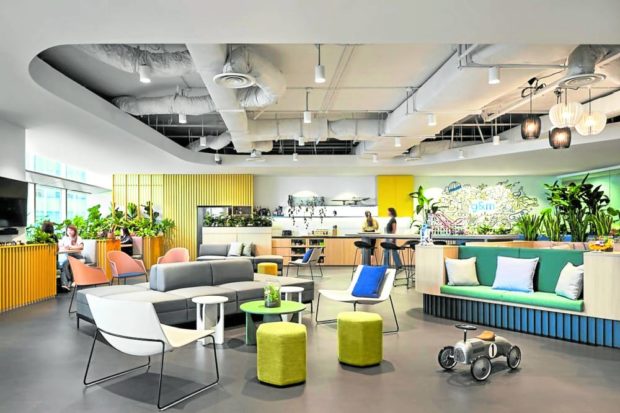Since April 1, many businesses have already gone back to the office, particularly the outsourcing firms which were mandated by the Philippine Economic Zone Authority (Peza) to have majority of their employees working onsite.
While many companies have complied, there are some who wish to retain work-from-home or work-from-anywhere schemes as options for their employees. Fearing mass resignation, several groups are pushing for flexible work options to help employees cope in the new normal. Could this new work scheme, however, lead to the death of traditional offices? More importantly, could this actually be a good thing for us in the long run?
Let us take a look at how the COVID-19 pandemic affects and reshapes our workspaces.
Challenges
When the pandemic first hit our country, offices across cities suddenly became ghost towns. Many companies were forced to rely on digital means to carry out operations, with their employees working from home. While this setup didn’t work for all, many employees found themselves enjoying the chance of spending more time with their families and reducing their commute time. Being at home during the quarantine also helped keep people safe and comfortable.

The Bumble Office in London features multiple work setups that encourage adaptibility and collaboration.
Now that we have been ordered to resume the traditional setup, many people are finding it difficult to go back to the office. As social distancing is nowadays imperative to our well-being, compact offices and shared facilities actually seem like dangerous areas. Canteens also pose similar threats. To keep up with the times, changes have to be done to the traditional office as we resume regular operations in the new normal.
Reforms
So how do we make offices enticing enough for employees to come back and work onsite? Mark Royal of the organizational consulting firm Korn Ferry suggests that leaders can gain a lot by listening to their employees’ experiences and preferences. Through this, one can determine what must be specifically improved in the existing office to make employees feel secure.
There are some common trends, however, that are in-demand in today’s offices. More spacious workstations, contactless technology, flexible lounges and sanitary stations are being added in the offices of many large corporations today. These have become essential to keep the COVID-19 virus and other pathogens from spreading in the workplace. In addition, some companies are adding amenities such as daycare centers to attract working parents back to the office.
Exemplary models
Offices that were built during the pandemic probably serve as the best examples from which we can learn about ideal designs for the new normal.
G&M Offices in Singapore, for instance, took into consideration the company’s future growth plans. To entice their employees to return to work onsite, the company aimed to provide a creative and fun space where they can mingle with others and make use of high end technology. The new G&M offices now feature both informal and formal collaborative spaces. Corners were eliminated in the design, with the designers opting for rounded edges and soft furniture. Natural light and plants awash the work areas. Cloud storage was incorporated throughout the office.
The playful environment that G&M now offers has been a hit so far. Visitors and regular inhabitants both enjoy the thrill of discovering new ways to work in the unique spaces. The project, designed by the international firm Unispace, redefines the traditional office successfully.
The Bumble London Office is another commendable project in the post COVID-19 era. Originally designed to accommodate maximum desk capacity, the design for the office was revised due to the pandemic. Designed by the firm Dthree, the new Bumble Office focuses on enhancing collaboration and providing adaptability.
The result exhibits the clear intentions of the company and the designer. The new work areas feature varied setups. Employees can choose to work in a classroom-like setting, cubby-hole meeting rooms or even in a lounge-type area. They are free to explore and choose their preferred workstyle, all while enjoying natural light and spots of green spaces. Overall, the place looks fun and engaging, redefining the work area beyond the traditional desks and cubicles.
In with the new
While it may take a while before offices become as busy as the pre-pandemic era, employees are gradually returning to onsite work. To ensure employee satisfaction and productivity, it would be best for companies to consider the new normal standards in preparing their office. While traditional setups may still exist here and there, it might be wise to shift to new setups to invigorate people to work traditionally again.
References:
Kornferry.com; officesnapshots.com; dthreestudio.co.uk and Peter Ghobrial; https://officesnapshots.com and Owen Ragget
Tima Miroshnichenko and Edward Jenner via pexels.com



